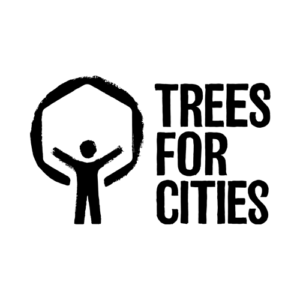The first city to join our national scheme planted their first street trees this week – and were helped by one of their Councillors too!
Cambridge City Council was the first UK city council to join Trees for Streets, and since the launch of its scheme in the spring, requests have been rolling in from local residents for new trees to be planted in streets across the city.
Celebrating the COP26 Summit
To mark COP26 and also the start of tree planting season, the council tree team has planted a selection of trees in Arbury and King’s Hedges, in the northern part of the city. These have been funded by Trees for Streets with money from the government’s Green Recovery Challenge Fund grant.
Dr Matthew Ling, Project Lead of the Cambridge Canopy Project explains more:
“We chose this area because lots of the streets don’t have as many trees as other parts of Cambridge. Also, planting more trees here complements some of the other projects we’ve been running in the area, because they involve planting smaller trees.”

Councillor Alex Collis, Executive Councillor for Open Spaces, Sustainable Food and Community Wellbeing helped to plant this Hop Hornbeam (Ostrya capinifolia) at Aragon Close. This tree is a native of southern Europe, so it will be well-suited to the warmer, drier conditions we may experience as a result of climate change.
What type of trees have been planted?
Hop Hornbeam, Flowering Cherry, Crab Apple, Nettle Tree, Hazel, Alder, Birch, Thorn, Lime, Field Maple, Callery Pear, and Indian Bean Tree.
This mixture of species has been carefully chosen to ensure a diverse blend, variation in the colour of leaves and flowers, resilience against disease, support for biodiversity, and shade provision.

How will this Benefit the local area?
Matthew says: “In some of these locations trees have had to be removed, so we are reinstating a new tree in the same spot, helping to maintain our target of growing tree canopy cover in the city by 2%. The streets in the planting area can be very sunny, meaning they will benefit from the shade these trees will provide as they grow. Having trees along streets has been found to help calm traffic speeds, planting more in residential areas like these is therefore a good thing for the people living here.”
The Trees for Streets app makes it easy for anyone to sponsor a tree in their neighbourhood by making a request to Cambridge City Council, empowering them to make a difference to the world immediately on their doorstep in just a few clicks. The council then checks the suitability of the chosen location, and makes arrangements to plant a tree the following winter: the best time to plant young trees to ensure they grow and thrive.
Why are street trees important?
Street trees do so much for us:
- capture carbon dioxide and produce oxygen
- improve our health and wellbeing – both physically and mentally
- absorb air pollution
- improve air quality by acting like natural filters
- create shading and cooling – so important in towns and cities
- make the neighbourhoods where we live that bit nicer
Beyond donating money to sponsor a tree, there are lots of other ways for people to get involved.
Once each street tree is planted, it will need watering every week throughout the summer for 3 years to give it the best chance of survival, and any litter or weeds will need removing too, to make sure it thrives.


